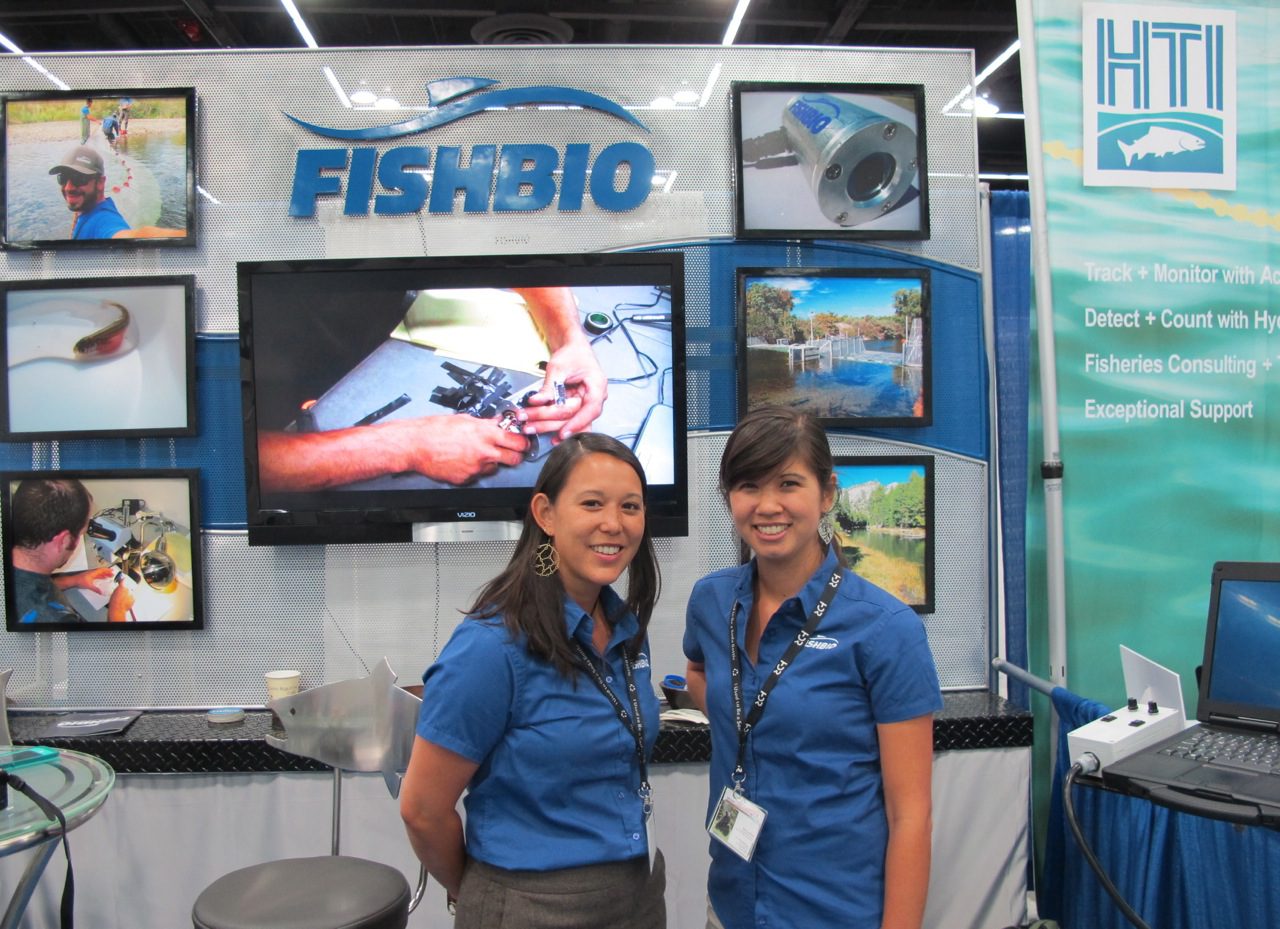Monday September 7, 2015

Our team has finally recovered from the whirlwind of the American Fisheries Society (AFS) Annual Meeting in Portland, Oregon, and by all accounts, the gathering was a big hit. With more than 3,000 attendees, 400 symposia, and 30 concurrent sessions to choose from, it was hard not to feel a bit overcome by the wealth of opportunities for learning about anything fish. We particularly enjoyed participating in the trade show alongside dozens of other exhibitors. All the hard work of our FABLAB paid off, with plenty of folks stopping by to check out our custom fabricated display, Adaptive Resolution Imaging System (ARIS) boat mount, and, of course, our handcrafted salmon chairs. We’ve compiled some of our favorite AFS highlights into this video, and have posted photos of the conference on Flickr. Hope you enjoy!
FISHBIO hosted a two-day symposium at AFS called “Keeping Up With the Times: Advancements and Creative Solutions Using Applied Technology in Fisheries Monitoring and Research.” We appreciated that our presenters were enthusiastic in updating all of us on advancements and innovative uses of both older and new technology. These talks spanned a variety of technologies, including Passive Integrated Transponder (PIT) tags, acoustic tags, infrared cameras (Vaki Riverwatcher), side-scan sonar, sonar cameras (Sound Metrics ARIS), video cameras, eDNA, laboratory genetics testing, resistivity counters, and bioelectrical impedance analysis. While we could go on at length about all the interesting topics covered, here are a few highlights:
- Oregon RFID is now able to mount PIT tag antennas on metal structures (such as culverts) and still get good detection.
- Hydroacoustic Technology, Inc. (HTI) continues to impress with the development of a new marine acoustic tag and other tags.
- The Vaki Riverwatcher and the ARIS by Sound Metrics provide options for passively monitoring fishes in no light-conditions and/or turbid water (see presentation on the Riverwatcher).
- West Fork Environmental has developed an unique design for a vertical PIT tag antenna array, which is able to adapt to changing flows and withstand objects floating down the river.
- Drones to are taking on a growing role in monitoring, and provide amazing aerial views to track river migrations.
- FISHBIO can build giant PIT tag antennas to monitor fish movement through diversion tunnels, and these antennas can withstand full discharge without issue.
We also co-chaired a symposium on “Sustaining Diverse Fisheries in the Mekong Basin,” which brought together researchers from around the world who are working on fisheries issues in the Mekong River region. The session began with a few talks stressing the importance of fisheries resources to the economics and health of people in the basin, and the current challenges these inland fisheries face. The presentations covered numerous topics, from the trophic flexibility of fishes in Cambodia’s Tonle Sap Lake, to innovative technologies used to investigate fish passage at weirs and dams in the Mekong. The session concluded with talks on the development of fish conservation zones around critical fish habitats (see presentation) and in-river structures, as well as the value of involving local communities in fisheries management. This brought the talks full circle to the important role fisheries play in the livelihoods and well-being of the people of the lower Mekong Basin.
We were thrilled that a number of researchers from Southeast Asia could attend the AFS meeting, including the head of FISHBIO’s Lao office. We took the opportunity to spend a few extra days exploring Portland and the surrounding areas. Highlights included a trip to Bonneville Dam and hatchery, the Portland farmer’s market, and Powell’s Books. After many engaging conversations and consuming impressive quantities of smoked salmon and craft beer, we have to conclude the conference was a rousing success. A big “thank you” to the tireless organizers, and we are looking forward to our next AFS experience!
This post featured in our weekly e-newsletter, the Fish Report. You can subscribe to the Fish Report here.
